Product Overview
Bi-Amino Injection is a compounded sterile solution that delivers equimolar concentrations of L-arginine hydrochloride and L-citrulline-100 mg of each amino acid per milliliter-in a 30 mL preservative-free multidose vial. Compounding may occur in a 503A pharmacy for a named patient or in a 503B outsourcing facility for office use.
The formulation was created for clinical settings in which oral supplementation is impractical or where rapid, predictable plasma amino-acid levels are required, such as peri-operative cardiovascular optimization, growth-hormone stimulation testing, or specialized sports-medicine protocols.
The product must be prescribed and administered by qualified practitioners who can screen for contraindications, monitor real-time hemodynamics, and intervene promptly should infusion-related adverse events arise.
Patient-information materials should emphasize that Bi-Amino Injection is a compounded preparation that has not been reviewed by the Food and Drug Administration for safety or efficacy, and that ongoing laboratory assessment-electrolytes, acid-base status, and renal function-forms an integral part of therapy.[1]
Bi-Amino Injection’s clinical rationale draws on pharmacokinetic evidence that intravenous arginine produces a sharp plasma peak followed by biphasic clearance, whereas citrulline bypasses splanchnic arginase activity, undergoes efficient renal conversion back to arginine, and sustains substrate availability for nitric-oxide synthase several hours beyond the initial infusion.
In combining both amino acids, the preparation may deliver rapid endothelial nitric-oxide substrate while prolonging systemic exposure, potentially enhancing vasomotor control, collagen deposition, and immunomodulatory nitrogen handling.
Formulators selected hydrochloride salt to mirror the acid-base characteristics of existing diagnostic arginine infusions but buffered the final product to physiological pH to lessen the transient hyperchloremic acidosis sometimes seen with large arginine-only boluses.
No consensus dosage exists for Bi-Amino Injection; protocols are extrapolated from endocrine testing and experimental vascular-support studies.
A common investigational regimen employs 0.5 g kg−1 of combined amino acids (maximum 40 g total), infused over 30 - 45 minutes with equal parts arginine and citrulline.
Lower maintenance doses-5 - 10 g of each amino acid two to three times weekly-have been explored in rehabilitation settings but remain unsupported by large outcome trials.
Central venous access is preferred for cumulative dosing above 20 g to avoid phlebitis, and continuous electrocardiography, non-invasive blood-pressure, and pulse-oximetry are minimum monitoring standards throughout and for at least 30 minutes after infusion.[12]
At the biochemical level, L-arginine serves as the sole substrate for nitric-oxide synthase isoenzymes. In endothelial cells, arginine oxidation produces nitric oxide (NO) and L-citrulline; NO diffuses into adjacent smooth-muscle cells, stimulates soluble guanylate cyclase, increases cyclic GMP, and lowers intracellular calcium, culminating in vasorelaxation and anti-platelet effects.
The newly formed citrulline is rapidly recycled to arginine by arginosuccinate synthase and arginosuccinate lyase, making the arginine-citrulline-NO cycle a self-sustaining engine for endothelial homeostasis.
Exogenous citrulline augments this loop because it is not a substrate for arginase, allowing more efficient restoration of the intracellular arginine pool.
The dual-component design of Bi-Amino Injection therefore amplifies both the immediate NO burst and the longer-term replenishment of arginine stores, a synergy that may be valuable in conditions characterized by endothelial dysfunction, impaired wound healing, or increased oxidative stress.[3]
Citrulline itself has demonstrable hemodynamic benefits that extend beyond substrate recycling.
Because it avoids hepatic first-pass metabolism, circulating citrulline is primarily cleared by the proximal renal tubule, where it is enzymatically converted to arginine.
Controlled trials reveal that chronic citrulline supplementation lowers peripheral and central systolic pressures, diminishes arterial stiffness indices, and improves skeletal- muscle perfusion during exercise rehabilitation.
When citrulline is co-delivered intravenously with arginine, the result is a smoother pharmacodynamic curve, mitigating rapid peaks and troughs in vascular tone that otherwise accompany arginine-only infusions.
Furthermore, citrulline participates in ammonia detoxification through the urea cycle, offering potential metabolic advantages in catabolic states with elevated nitrogen waste.[4]
Bi-Amino Injection is contraindicated in patients with severe renal impairment, hepatic failure, baseline hyperkaliemia, or uncompensated metabolic acidosis. Case reports document life-threatening potassium elevations and fatal arrhythmias when arginine infusions were administered to individuals with diminished renal or hepatic clearance, illustrating that even short-duration dosing can overwhelm compromised excretory pathways.
Pre-infusion screening must therefore include a comprehensive metabolic panel, electrocardiography, and acid-base assessment. Dialysis dependence or an estimated glomerular filtration rate below 30 mL min−1 1.73 m−2 represents an absolute contraindication unless the infusion is placed immediately before dialysis under nephrology supervision.[5]
Historical series in chronic-kidney-disease populations further underscore risk: moderate renal impairment alone predisposed recipients to potassium surges despite apparently normal baseline laboratory values.
Similar caution extends to patients on potassium-sparing diuretics, aldosterone antagonists, or angiotensin-receptor blockers, all of which blunt renal potassium excretion.
Severe liver dysfunction poses parallel concerns because urea-cycle capacity is impaired, potentially leading to hyperammonaemia and encephalopathy.
Finally, systemic acidosis worsens during arginine metabolism; thus, clinicians should withhold Bi-Amino Injection until arterial pH is stabilised above 7.30 to prevent compounded acid-base derangement.[6]
Premarketing surveillance of parenteral arginine formulations identified nausea, vomiting, headache, flushing, numbness, and local venous irritation in approximately three per cent of infusions.
These adverse events are usually infusion-rate dependent and resolve with simple supportive measures such as slowing the drip, providing anti-emetics, or alternating cannula sites.
The addition of citrulline has not significantly altered incidence or severity, but formal head-to-head trials are absent, emphasizing the need for vigilant post-marketing reporting. Routine acid-base checks during high-dose regimens help detect the transient hyperchloremic acidosis that may underlie many subjective complaints of warmth and facial tingling.[9]
Broader pharmacovigilance databases list rare but potentially serious events: rash, oedema, transient hypotension, hematuria, airway hyper-reactivity, and syncope.
The mechanism for bronchospasm remains speculative but may involve NO-mediated bronchiolar smooth-muscle relaxation tipping into paradoxical constriction in susceptible individuals.
Slow titration, dilution to isotonicity, and bedside resuscitation supplies are recommended precautions.
Dose-limiting toxicity has not been precisely defined in humans, yet practitioners should terminate infusions if severe dizziness, chest tightness, or abrupt blood-pressure drops occur, then reassess electrolyte status and acid-base balance before re- challenge.[10]
Interest in amino-acid therapy during pregnancy stems from observations that impaired nitric-oxide bioavailability contributes to pre-eclampsia and fetal growth restriction.
Trials administering oral or intravenous arginine and citrulline have reported improvements in uteroplacental hemodynamics and gestational blood-pressure control, without documenting teratogenicity or major maternal complications.
Nevertheless, sample sizes are small and methodologies heterogeneous, leaving substantial uncertainty.
Bi-Amino Injection should therefore be considered only when potential maternal-fetal benefits clearly outweigh theoretical risks, and treatment should proceed in high-risk obstetric units where serial fetal surveillance and maternal laboratory assessment are feasible.[11]
The compounded product should be stored at controlled room temperature (20 - 25 °C) and protected from prolonged heat, freeze-thaw cycles, or direct sunlight, all of which can degrade amino-acid integrity.
- Mayo Clinic. (n.d.). Arginine (intravenous route). https://www.mayoclinic.org/drugs-supplements/arginine-intravenous-route/description/drg-20406819
- Claessens, P. et al. (1999). Pharmacokinetics of intravenous and oral L-arginine in normal volunteers. British Journal of Clinical Pharmacology, 47(3), 261-269. https://doi.org/10.1046/j.1365-2125.1999.00927.x
- Pérez-Guisado, J., & Jakeman, P. (2025). Overview of mechanisms related to citrulline malate supplementation. Heliyon, 11(2), e010291. [nolink]https://doi.org/10.1016/j.heliyon.2025.e010291[/nolink]
- Figueroa, A. et al. (2019). Effect of oral L-citrulline on brachial and aortic blood pressure: A systematic review and meta-analysis. Nutrition & Metabolism, 16, 24. https://doi.org/10.1186/s12986-019-0415-y
- Bushinsky, D. A., & Gennari, F. J. (1978). Life-threatening hyperkalemia induced by arginine. Annals of Internal Medicine, 89(5), 632-634. https://doi.org/10.7326/0003-4819-89-5-632
- Hertz, P., & Richardson, J. A. (1972). Arginine-induced hyperkalemia in renal failure patients. Archives of Internal Medicine, 130(5), 778-780. https://pubmed.ncbi.nlm.nih.gov/5083420/
- Patel, A. B. et al. (2025). ACE inhibitors. In StatPearls [Internet]. StatPearls Publishing. https://www.ncbi.nlm.nih.gov/books/NBK430896/
- Raitakari, O. T. et al. (1996). Intravenous L-arginine acutely alters the human renin- angiotensin system. Journal of Clinical Investigation, 97(8), 1941-1946. https://doi.org/10.1172/JCI118591
- Pfizer Inc. (2023). R-Gene 10 (arginine hydrochloride) adverse reactions. https://www.pfizermedicalinformation.com/r-gene-10/adverse-reactions
- RxList. (2022, March 15). Arginine: Side effects, dosage, uses. https://www.rxlist.com/arginine/generic-drug.htm
- Qian, Z. et al. (2019). L-arginine and L-citrulline supplementation in pregnancy: A systematic review. Nutrients, 11(4), 837. https://doi.org/10.3390/nu11040837
- Manchester University NHS Foundation Trust. (2023). Arginine stimulation test protocol - adults (Protocol BC-CL-PR-16). https://mft.nhs.uk/app/uploads/2023/03/Arginine-Stimulation-test-Adults.pdf
- Pfizer Inc. (2023). R-Gene 10 (arginine hydrochloride) storage and handling. https://www.pfizermedicalinformation.com/r-gene-10/storage-handling
- Tsuboi, H. et al. (2023). Dietary arginine and citrulline supplements for cardiovascular health: A meta-analysis. Nutrients, 15(5), 1268. https://doi.org/10.3390/nu15051268
- Lamboley, C. et al. (2024). Effect of chronic nitrate and citrulline supplementation on vascular function and exercise performance in older individuals. Aging, 16(2), 198-217. https://doi.org/10.18632/aging.101984
- Schulman, S. P. et al. (1999). Supplemental L-arginine and nitrate tolerance during continuous transdermal nitroglycerin therapy. Journal of the American College of Cardiology, 33(4), 1119-1125. https://doi.org/10.1016/S0735-1097(02)01729-1
- Takahashi, Y. et al. (2014). L-citrulline protects kidney function in type 1 diabetic mice. Kidney International, 86(5), 960-971. https://doi.org/10.1038/ki.2014.104
- Bong, S. K. et al. (2021). Longer-term L-citrulline supplementation improves vascular function: A meta-analysis of randomized trials. British Journal of Nutrition, 126(12), 1764- 1776. [nolink]https://doi.org/10.1017/S0007114521001541[/nolink]
- Drugs..com. (2025, January 2). Arginine - side effects. https://www.drugs.com/sfx/arginine-side-effects.html
- WebMD. (2023). L-citrulline: Uses and risks. https://www.webmd.com/vitamins-and-supplements/l-citrulline-uses-and-risks
- DrOracle. (2025). Is L-citrulline safe to take? https://www.droracle.ai/articles/34228/is- l-citrulline-safe-to-take-
- Gómez, J. et al. (2003). Interactions of L-arginine, isosorbide mononitrate, and angiotensin II in elderly hypertensive patients. American Journal of Hypertension, 16(9), 719-724. [nolink]https://doi.org/10.1016/S0895-7061(03)01002-5[/nolink]
- Yang, Y. et al. (2025). Citrulline regulates macrophage metabolism and inflammation to promote anti-ageing resilience. Science Advances, 11(9), eads4957. https://doi.org/10.1126/sciadv.ads4957
Can Bi-Amino Injection improve aerobic performance during physical rehabilitation?
Meta-analyses of nitric-oxide precursors show modest gains in endurance and power- output metrics, suggesting parenteral arginine-citrulline may provide similar, though still investigational, benefits when overseen by trained clinicians.[14]
Will it consistently lower blood pressure?
Systematic reviews indicate that citrulline can reduce both brachial and aortic systolic pressures in pre-hypertensive individuals, yet inter-patient variability necessitates vigilant monitoring during infusion therapy.[15]
Is co-administration with nitrate therapy for angina advisable?
Supplemental arginine may attenuate nitrate tolerance but can amplify acute hypotension; staggered scheduling and gradual dose escalation are recommended.[16]
How safe is it for kidneys, especially in diabetic nephropathy?
Pre-clinical data show citrulline preserving nephron architecture and reducing inflammation in diabetic models, but human evidence is absent, so thorough renal monitoring is mandatory.[17]
Could post-meal vascular function improve? Longer-term citrulline interventions enhanced flow-mediated dilation after meals, hinting that IV delivery might extend such benefits, though this remains to be tested clinically.[18]
What side effects are most common?
Flushing, headache, nausea, and local irritation are the leading complaints and usually resolve when infusion speed is reduced.[19]
Does citrulline interfere with other medications?
Reviews caution that it may intensify hypotensive responses or alter drug absorption, underscoring the need for comprehensive medication reconciliation.[20]
Is long-term use considered safe?
Safety analyses report excellent tolerability at doses up to 6 g daily orally; parenteral regimens warrant periodic liver-enzyme and electrolyte checks.[21]
Should patients on isosorbide mononitrate avoid the injection?
Combined arginine and nitrate therapy can produce additive hypotension; proceed only with incremental dosing and close blood-pressure surveillance.[22]
Does the product modulate immunity?
Basic-science research suggests citrulline can steer macrophages toward an anti- inflammatory phenotype, but no clinical trials have evaluated immune outcomes with Bi- Amino Injection.[23]
Disclaimer: This compounded medication is prepared under sections 503A and 503B of the U.S. Federal Food, Drug, and Cosmetic Act. Safety and efficacy for this formulation have not been evaluated by the FDA. Therapy should be initiated and monitored only by qualified healthcare professionals.
Administration Instructions
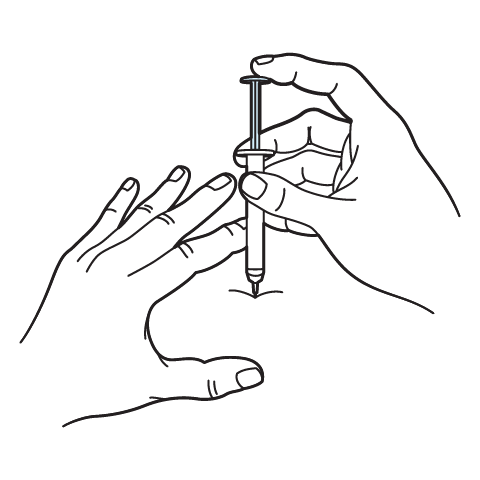
Intramuscular Injection Instructions
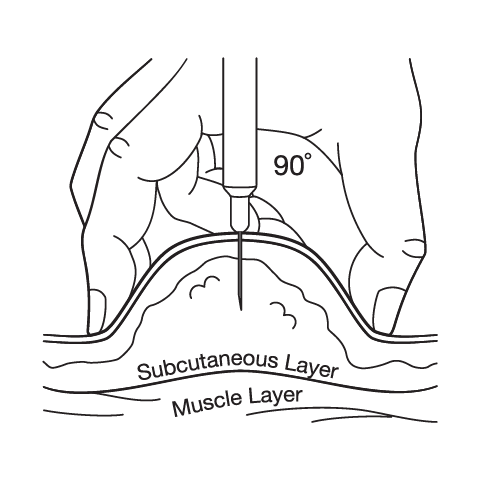
Subcutaneous Injection Instructions
503A vs 503B
- 503A pharmacies compound products for specific patients whose prescriptions are sent by their healthcare provider.
- 503B outsourcing facilities compound products on a larger scale (bulk amounts) for healthcare providers to have on hand and administer to patients in their offices.
Frequently asked questions
Our team of experts has the answers you're looking for.
A clinical pharmacist cannot recommend a specific doctor. Because we are licensed in all 50 states*, we can accept prescriptions from many licensed prescribers if the prescription is written within their scope of practice and with a valid patient-practitioner relationship.
*Licensing is subject to change.
Each injectable IV product will have the osmolarity listed on the label located on the vial.

Given the vastness and uniqueness of individualized compounded formulations, it is impossible to list every potential compound we offer. To inquire if we currently carry or can compound your prescription, please fill out the form located on our Contact page or call us at (877) 562-8577.
We source all our medications and active pharmaceutical ingredients from FDA-registered suppliers and manufacturers.

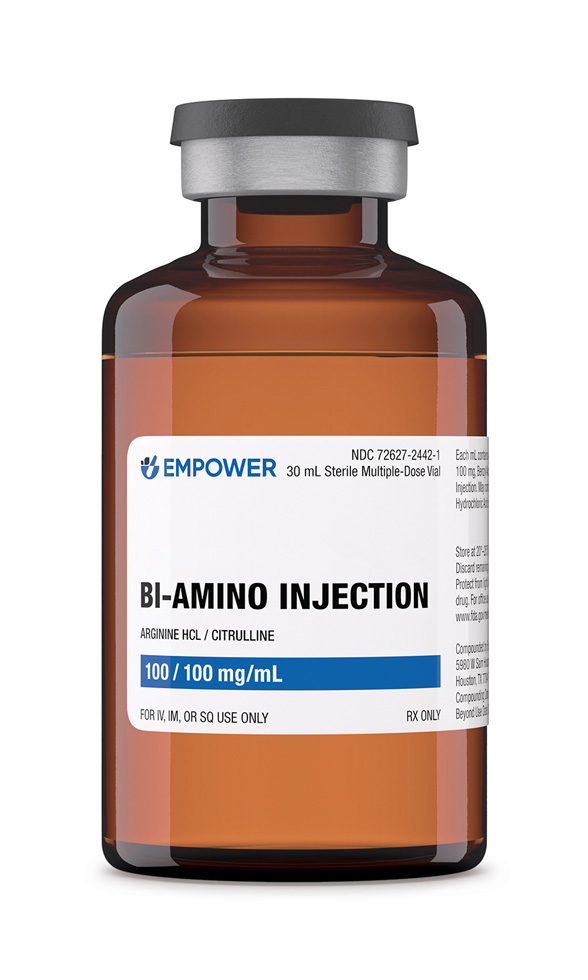
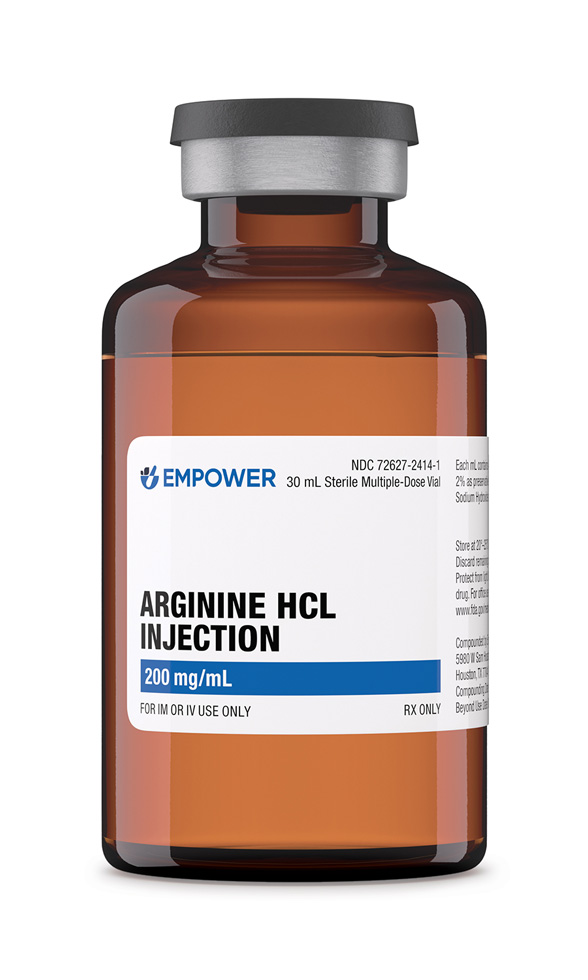 Arginine HCl Injection
Arginine HCl Injection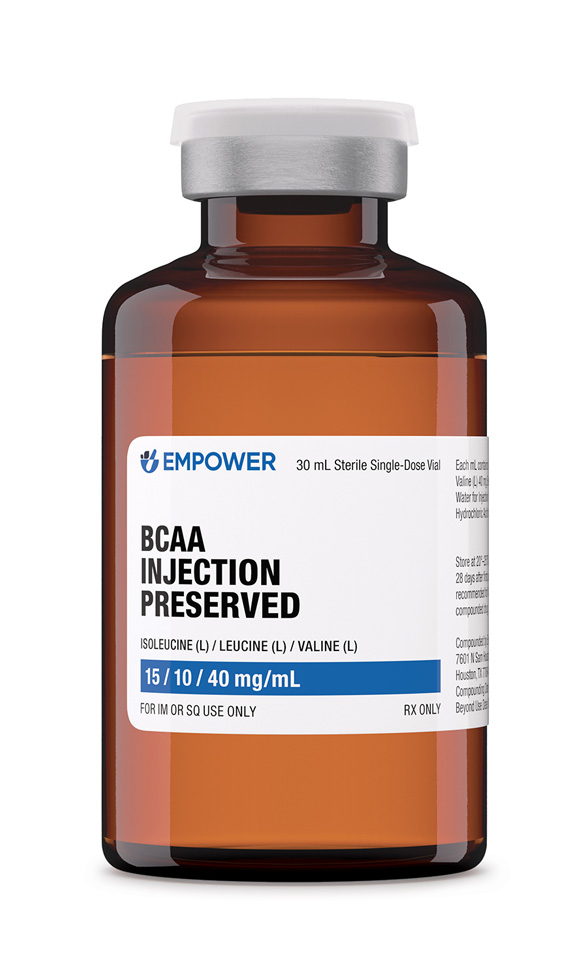 BCAA Injection
BCAA Injection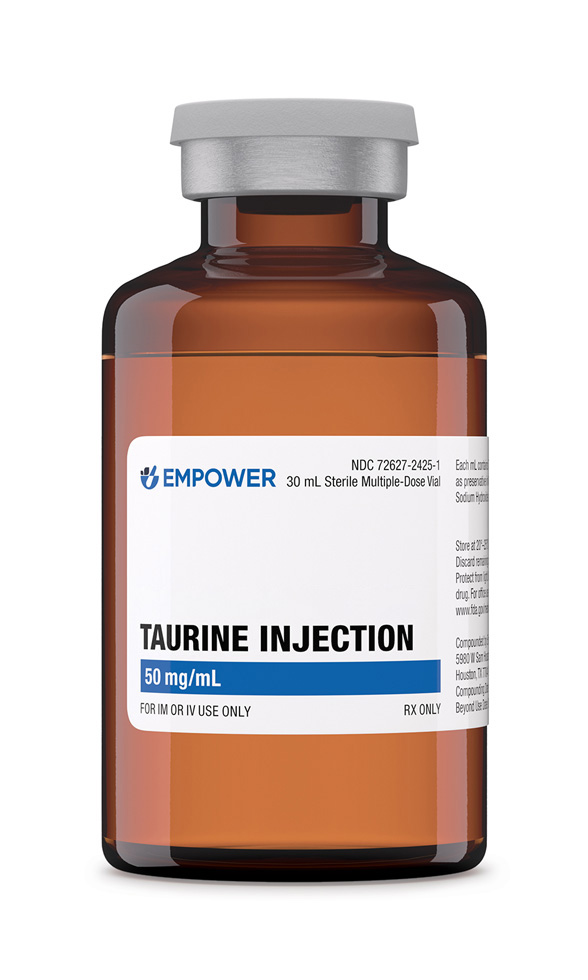 Taurine Injection
Taurine Injection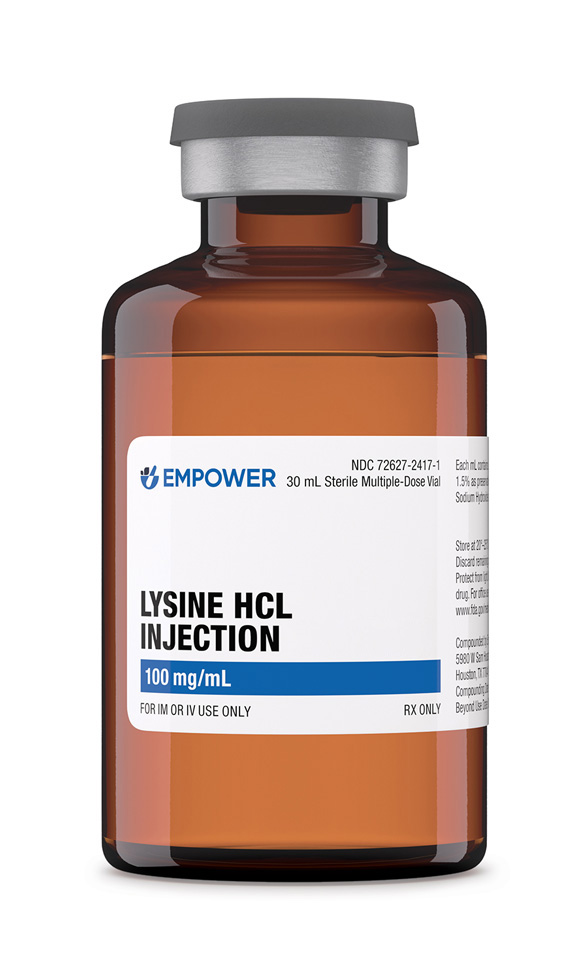 Lysine HCL Injection
Lysine HCL Injection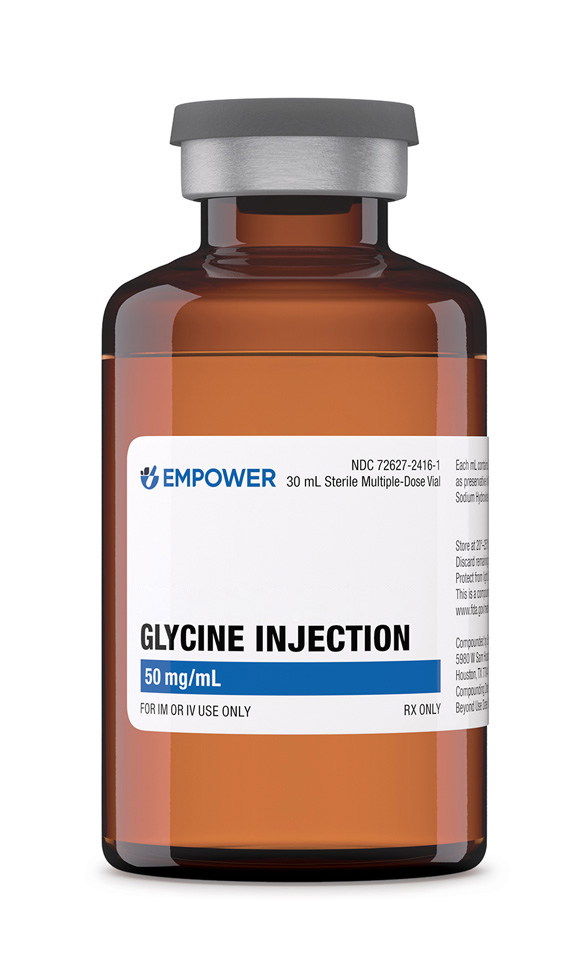 Glycine Injection
Glycine Injection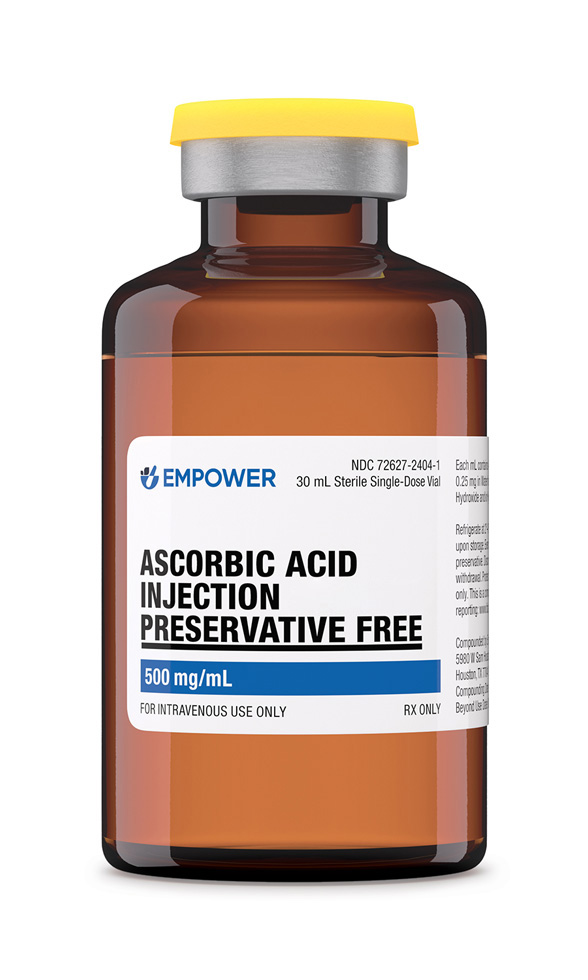 Ascorbic Acid (Vitamin C) Injection
Ascorbic Acid (Vitamin C) Injection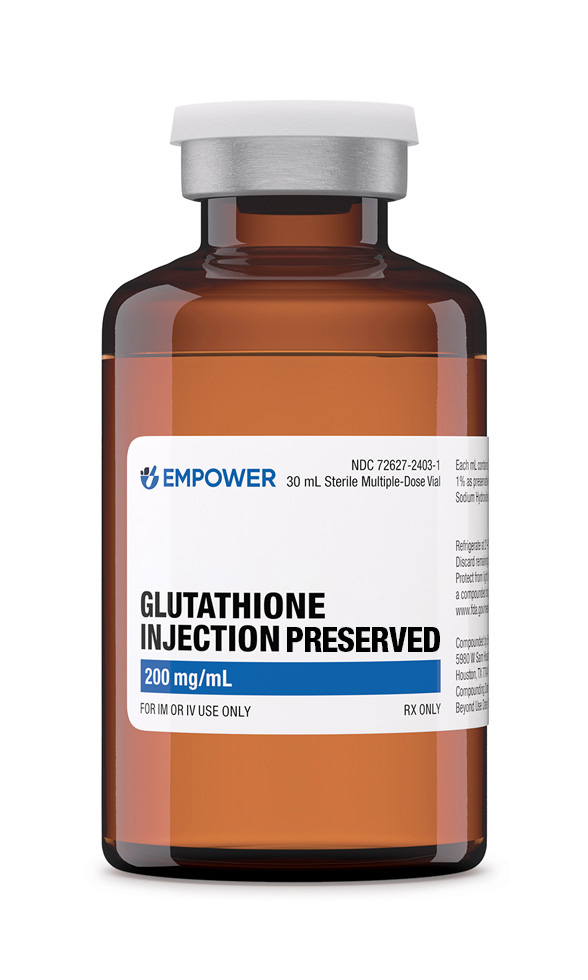 Glutathione Injection
Glutathione Injection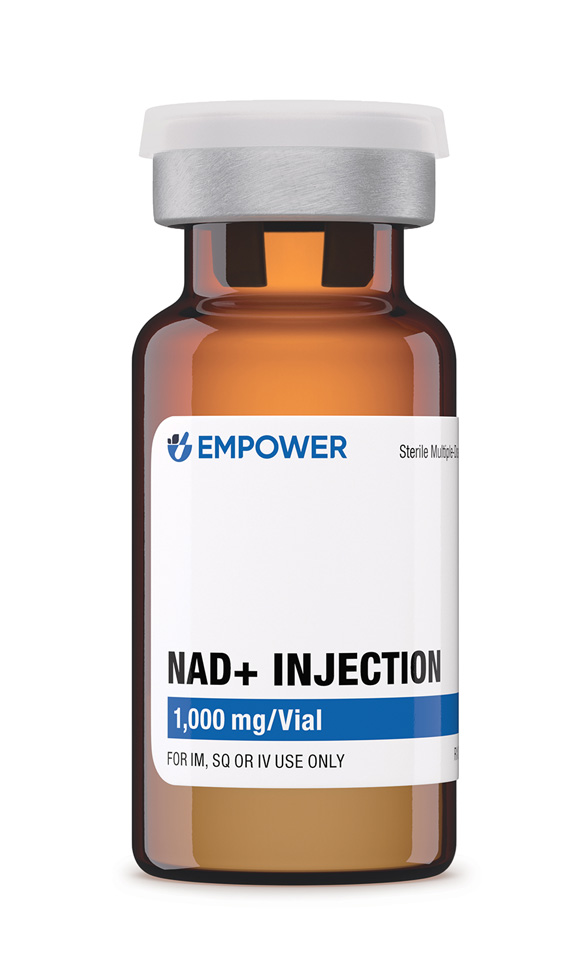 NAD+ Injection (Lyo)
NAD+ Injection (Lyo)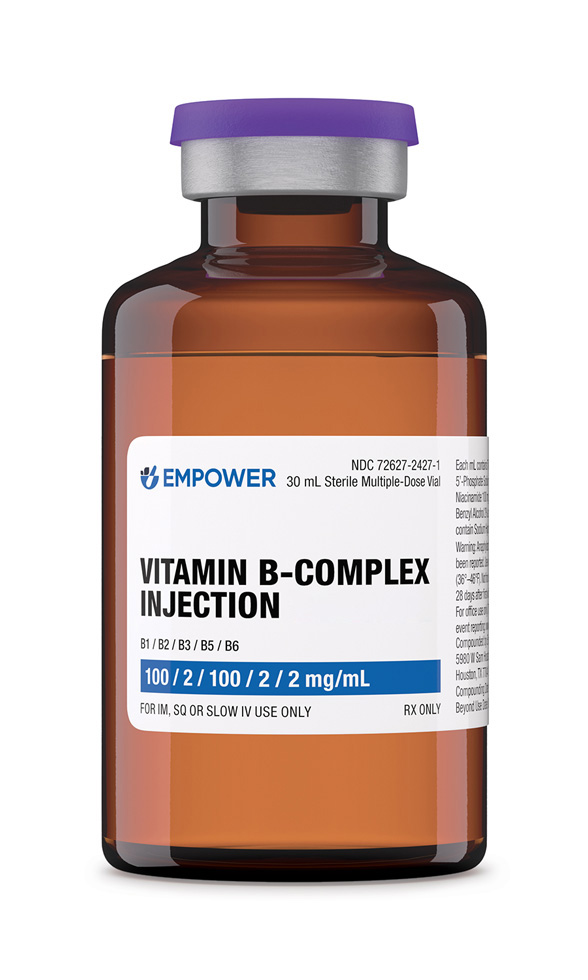 Vitamin B-Complex Injection
Vitamin B-Complex Injection